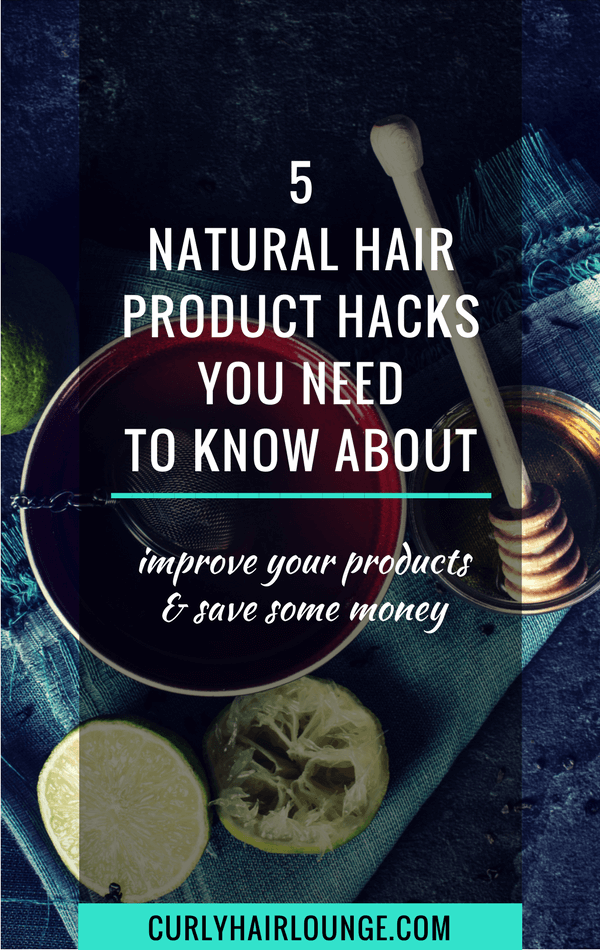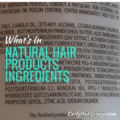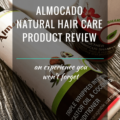Anyone who’s ever bought a hair product, or any kind of beauty product, has had the experience of ending up with a product that didn’t quite tick all the boxes to be named “The One”. However, just because it failed to measure up to the expectation, it doesn’t mean it’s bad or that you should dismiss or bin it. Sometimes all it needs is a little DIY tweak, and I have a few natural hair product hacks you’ll want to know about.
So while in my recent post 10 Tips When To Stop Using a Product On Your Curly Hair, I mentioned you should stop using a product that is not working for your curly hair, I also want to remind you that you should do that after several attempts to combine it with other products or change its functionality. Additionally, before you completely mail the product to wasteland, I also want you to try the DIY hacks I’m about to share.
Why, you ask?
Well, because I hate throwing money away (who doesn’t? 😉 ). Although the products I frequently use on my natural hair regimen are homemade, saving me a lot of money, the ones I do spend money on, I really want them to work. However, you and I both know that in our the search for the best hair product we’ll come across products that need a little “something extra” to reach the next level or to just become good enough for us to finish the container without shedding tears on lost money (I know we’ve all been here).
WARNING!
But before I let you in on how you can fix those products I want to warn you that making some DIY adjustments to your store-bought product can stop the preservatives in your product from being effective. So, a good way to avoid mould and bacteria from growing in your scalp and hair is to only ‘DIY fix’ the amount of product you are going to use, not the whole product. If you do more than you need don’t use it, just throw it away.
Okay, you’ve been warned now let’s go straight to your hair product hacks.
#1| Too Liquid/Thick Leave-in Conditioner
Sometimes the consistency of the product is just off for your hair. If your leave-in conditioner happens to be too thick for your hair you can add some rose water or an aloe vera/water mix to achieve the consistency you want. If on the other hand, your leave-in is too liquid you can add a bit of your regular conditioner. Give it a little shake to mix everything and it’s good to go. Problem solved!
#2| Stripping Shampoo
If you happen to have a shampoo that makes your hair feel stripped or you bought a regular sulphate shampoo by mistake, you can always soften it by adding some conditioner to it. It will still clean your hair, but it will be much more gentle. How much you add depends on your preferences and how your hair feels.
This is a bit like using a cleansing conditioner to wash your hair, only a bit stronger. Still, this may be a good solution especially if you are just starting your natural hair journey. For a lot of naturals, most I believe, ditching strong sulphates is one of the first things to implement in a new hair routine.
Therefore, if you don’t want to throw all your old products away this may be a good intermediate solution, just until you finish your old product stash.
#3| Lack Of Moisture
If your curly hair product only makes your hair feel moisturised and soft on the first day, then you are running the risk of having your hair become dry and brittle, leading you to damaged hair. However, a simple hack can prevent all this.
If your leave-in, conditioner, cream moisturiser or even deep conditioner are scoring low on the hair moisture level all you may need to do is add a little glycerin. Glycerin is a humectant which means it will attract and retain moisture to the surface of your hair keeping your hair moisturised for a longer period of time. Measure your glycerin and your product at a ratio of 1:4 to start or as an example, 25ml of glycerin to 100ml of your product. If you feel this is not enough add a bit more the next time you do your mix.
#4| Lack Of Slip
If curly hair can’t live without moisture, you, the curly girl on a natural hair journey, can’t live without some slip in your hair products. This is what will prevent many stressful wash days and styling sessions. Therefore, if you wanna save your product and money from total waste and you’re “dying” to have some slip in your hair product, why not make some flax seed gel and mix it with your product?
I have this simple recipe here on the blog that you can follow if you need some guidance, once it’s done blend the flaxseed gel with your hair product. Please remember to only mix as much as you will be using for a week or just your wash day, not more. Although your hair product has preservatives the gel doesn’t and mixing a big batch can quickly spoil everything as bacteria can quickly spread.
#5| Runny Deep Conditioner
There are several ways you can rescue a runny deep conditioner. One is to try hack #1 and add some regular conditioner. However, if you want to fix your conditioning hair treatment and kick it up a notch, you can use greek yoghourt or mayonnaise to thicken it and also add some protein (please know that by adding protein in this way it doesn’t make your deep treatment a real protein treatment as proteins in these ingredients are too big to penetrate the hair shaft).
Cornstarch can also be a good option. I’ve concocted homemade deep conditioners with it as my base and it lends a creamy consistency and helps to add moisture and shine to the hair. All you need it to do is warm 100 ml of water in a pan, add 1 tbsp of the cornstarch and mix until it thickens. Once it cools down you can add it to your deep conditioner.
These are some of the natural hair product hacks I’ve tried when my hair is not loooving a product but I can still work with. The bottom line is if you have an underperforming product you don’t need to strain your budget just to get new ones. Well, you can if you want to, but who’s got money to waste in this economy?! The thing is you can now “fix” them and not just pushing it to the back of your cupboard, or worse, putting it in the bin.
It’s all about “re-engineering” your products to meet your hair likes. Well, at least until it ends and you find something better. 😉
What other hair product hacks worked for you?







4 thoughts on “5 Natural Hair Product Hacks You Need To Know About”
Hi Monica, this question is so far fetched but it was on my mind so here it goes. ? I’m about to incorporate using a spray bottle to lightly mist my hair on a daily basis which will include water, a leave in conditioner and an oil. My question is, being that oil and water don’t mix, and while in a spray bottle mixed with water, the oil of course just sits on top even after shaking. Being that the tube pulls from the bottom which is where the water is, does it actually even spray out any oil along with it at all, or am I really just spraying everything else that’s in the bottle except for the oil?
Hi Jamie,
A simple solution to not leave the oil at the top of your DIY concoction is to shake the spray bottle before you use it. Another solution is to add an emulsifier to the mix like Xanthan Gum, but you may have to use a mixer the blend everything well. I just shake the bottle.
Hi Monica 2 points….
I was using glycerine mixed with water and oil in a spray bottle. This totally kept my hair moisturised and my scalp free from flakes while in crochet braids.
My hair is now out and I have stopped using glycerin (humectant) after reading lots of posts about it causing moisture to be drawn from hair.
How does honey compare to glycerin in this respect and can I use it in a spray bottle
Secondly, is it OK to use oil in a spray bottle concoction for daily moisturising. This seems to contradict the LOC method. Does applying the oil & water together create a film of oil on the haur that stop the water penetrating and moisturising?
Iso there a right/ wrong time to use the LOC method. I general do it after a wash day.
Hi Jo,
Working with glycerin can be tricky because if there’s too much humidity in the air your hair will bulk up and make it frizzy, raise the cuticle layers and possibly break some making your hair more porous. If there’s no humidity and the air is dry glycerin will take moisture from your hair and make it dry. If you’re not sure what humidity level you normally have where you live, try your concoction and see how it works.
Just as glycerin, honey is an humectant. I like using it in deep conditioning concoctions, pre-poos and in situations where it will be rinsed out. For a spray recipe, I’d be afraid to attract insects because of the sweet/sugar on my hair, even though it is diluted. As for oil and water, it’s perfectly fine I use it. In the concoction you’re mentioning water and oil won’t mix, you’d need an emulsifier for that. Your hair will absorb the water and the oil will remain on top or penetrate, depending on the oil you use. When you spray the solution different amounts of water and oil will come out and will be deposited in different places, then you will smooth it out. The LOC method is best done after you wash your hair, it will keep your hair moisturised for several days.
Monica